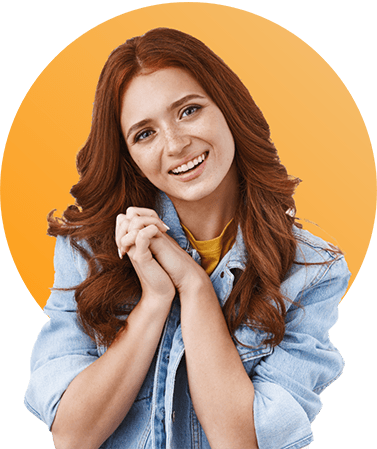
What is Wildlife Exclusion?
Exclusion involves sealing the entry points of animals into your home and business. This will prevent them from coming back in. This is easier than trying to exclude wildlife by yourself. You can seal all entry points so that they cannot come in.
AAAC Wildlife Exclusion Services is able to provide humane exclusion services for all wildlife that might pose a risk to your home and business. We are highly trained to do exclusion safely and correctly.
We can help with animals living under or around your building’s walls. We can seal all entry points for animals that we find. This includes holes in floors and cement cracks around pipes.
How We Conduct Wildlife Control and Exclusion Services
Nuisance wildlife may have somehow managed to enter your home or business, and you are now thinking about trapping and getting rid of them. But, trapping alone will not solve your problem. Although you may be able to eliminate the first infestation, if you don’t do wildlife exclusion, you can only wait for the next group to arrive. These are the steps that we use to end the cycle of infestations using animal exclusion methods:
Find and seal all entry points:
We begin by finding all access points used by animals. This includes holes in floors and cement cracks around pipes – basically, any place an animal could gain access to your home. This includes holes in roof shingles, soffits, eaves, fascia, and roof flashing as well. Next, we close off the access points. In some cases, we achieve this by drilling metal or rubber grommets on top of the hole, which also creates a tight seal. For other situations, wire mesh can be used as a plug to cover the holes. Next, cover your hole with a waterproof covering. It will keep it safe from the elements. Finally, we must wait to determine if there are other openings that could allow animals in your building.
Exclude wildlife using a trap or one-way door
Top pest control specialists will locate the main entrance used by wild animals to gain entry and exit to your home or place of business. We deliberately leave this gap open so we can properly eliminate nuisance wildlife. Once we have identified the hole, we can either use a live trap or a one-way door.

One-way doors: A one-way entrance is an option for those who don’t want their animal killed. These doors are designed to allow animals to enter, but not leave. We slightly open the door, just enough to allow the animal through, but not enough for them to turn around or come out of. After that, we place some bait on the other side of the hole, close it and wait for them to enter. It will be impossible for them to get out once they have moved towards it. They won’t be able to open the door from their side.

Live traps: If you want to use live traps, set traps next to any openings outside or on the roof that animals might use. By placing traps near these openings, we can lure the animals into our trap so we don’t have to deal with them or see them at all. Once the animal enters the trap, it’s caught!. We might need to install a cage trap if we are trying to trap larger animals like raccoons or opossums. It is a wire mesh trapping device that keeps the animal inside. Then technicians from our wildlife removal firm will take it out of your home.
Popular Access Points for Animal Entry
For future wildlife infestations to be prevented, an experienced wildlife pest control company operator must inspect all the possible ways squirrels, rodents (rats, mice, bats, birds, and other wildlife) can use to access your home. AAAC Wildlife Removal is quite thorough. But, here is a quick guide of the most commonly used access points by animals to get inside your house.

Ridge Vents
Bats commonly enter attics through the Roof Ridge Vent. This is a narrow metal strip that runs along one side of the roof. Ridge Guard can be used as a sealant to stop bats from entering attics. After the vents have been sealed, we can complete a roof repair to ensure your home is animal-proof. If you take photos of the roof, we can give you an idea of whether or not your ridge vents are open to animals.

Gable Vents
Many homes have gable vents that allow squirrels, raccoons, and other wildlife to get in. These vents are designed to provide airflow to your attic in hot weather and they may be screened over or have a small flap that can easily be pried open from underneath with the animal’s paw. Wire mesh can be used to secure the vents. We can also repair any damage to the vent flaps or replace any wood that has become rotted.

Dryer Vents
Dryer vents provide rodents with a way in. These vents are a common entry point for rodents and birds. The dryer vents allow airflow through and keep the birds alive. This is why it’s so important to cover these vents with metal mesh and seal all openings.
Birds love dryer vents because of the warmth that is moving through them. As birds use dryer vents to access nesting spaces, you may see an increase in your electricity bills. Installing common vent guards is the best preventative measure for this problem.

Soffit
Squirrels and raccoons love getting into your attic through a damaged soffit. An experienced wildlife removal company will repair any damaged wood that has allowed wildlife to enter your attic and secure it with closures or metal mesh. Your soffit will look as good as new and your rodent family will be gone for good.

Fascia
The fascia of the house is another favorite spot for wild animals. If your roof has gutters, the fascia is what would be below the gutter. It is a longboard that covers any gap between the roof’s edge and your eaves. We secure the gaps with metal mesh and remove any rotted wood. Then, we cover it with a metal cover. This prevents wildlife from accessing this area.

Eaves
Raccoons love to crawl under your home’s eaves. Eaves are where your roof meets the side of your house. Our technicians can either place the metal mesh in these areas to exclude wildlife, or we can install special Eaves Guards that will stop animals from getting back in.

The Chimney
The chimney is the most common entry point for animals into a residence. We use chimney caps that will prevent this entryway, or we will remove and replace chimney liners if we need to get rid of critters that are already inside.
Bats, squirrels, raccoons, and other small animals love to rest in the chimney. This is a difficult access point for animal control companies to check as fire hazards and venting are present. We will often use flameless heat detection cameras to figure out where the animals are hiding in order to remove them safely, or we can just remove the old liner and cap and then replace them.

Cracks in the foundation
Foundation cracks are the favorite access point for rodents. Foundation cracks can be filled with a cement compound. This will prevent rodents from entering the walls. This type of repair is not only animal-proof, but it also makes your home look better from the outside as well!

Exposed pipes
All species of rodents just love to get inside the walls of your home using exposed pipes. The best prevention for this is to secure any gaps with metal mesh, and then cover up pipe openings with a cap that prevents animals from entering again while allowing air to freely move through all spaces in your home.

Wildlife Damage Repair Service
It’s crucial to repair any damage done by rodents, squirrels and bats, birds or mice, rats after your wildlife exclusion is complete. Many wild animals will make their entryway into your home bigger by gnawing it with their teeth and by scratching with their claws. This can leave some unsightly damage.
Our wildlife damage repair services rank high among pest control professionals. We have the contracting and carpentry experience needed to repair even the most complex forms of wildlife damage. Our contractors are capable of replacing damaged drywall or insulation with other building materials either on their own or in teams. Their knowledge and skills allow them to repair your home efficiently and quickly to reduce the possibility of further animal damage.
Learn more about Wildlife Damage Repair

Attic Restoration
An infestation could cause your attic to be contaminated with blood, urine, and feces. This can create quite the stench as well as a fit environment for mold growth. Our pest control experts will replace any contaminated insulation with materials that have been treated against moisture or odor. You can also have insulation replaced if it is damaged or chewed by rats, mice, or other pests. This will be done by attaching new material to your attic floor using heavy-duty staples. Our attic repair service will restore your attics to their original glory!
Learn more about Attic Restoration
Wild Animal Pest Control
Exclusion is a humane approach to pest control. Wildlife can be humanely trapped or encouraged to leave, then unable to get back in after their openings in the home have been sealed. This article provided some insight on how professional wildlife exclusion services resolve the problems caused by wild animals in the home. AAAC Wildlife Removal offers a professional wildlife exclusion service. Call us today!








